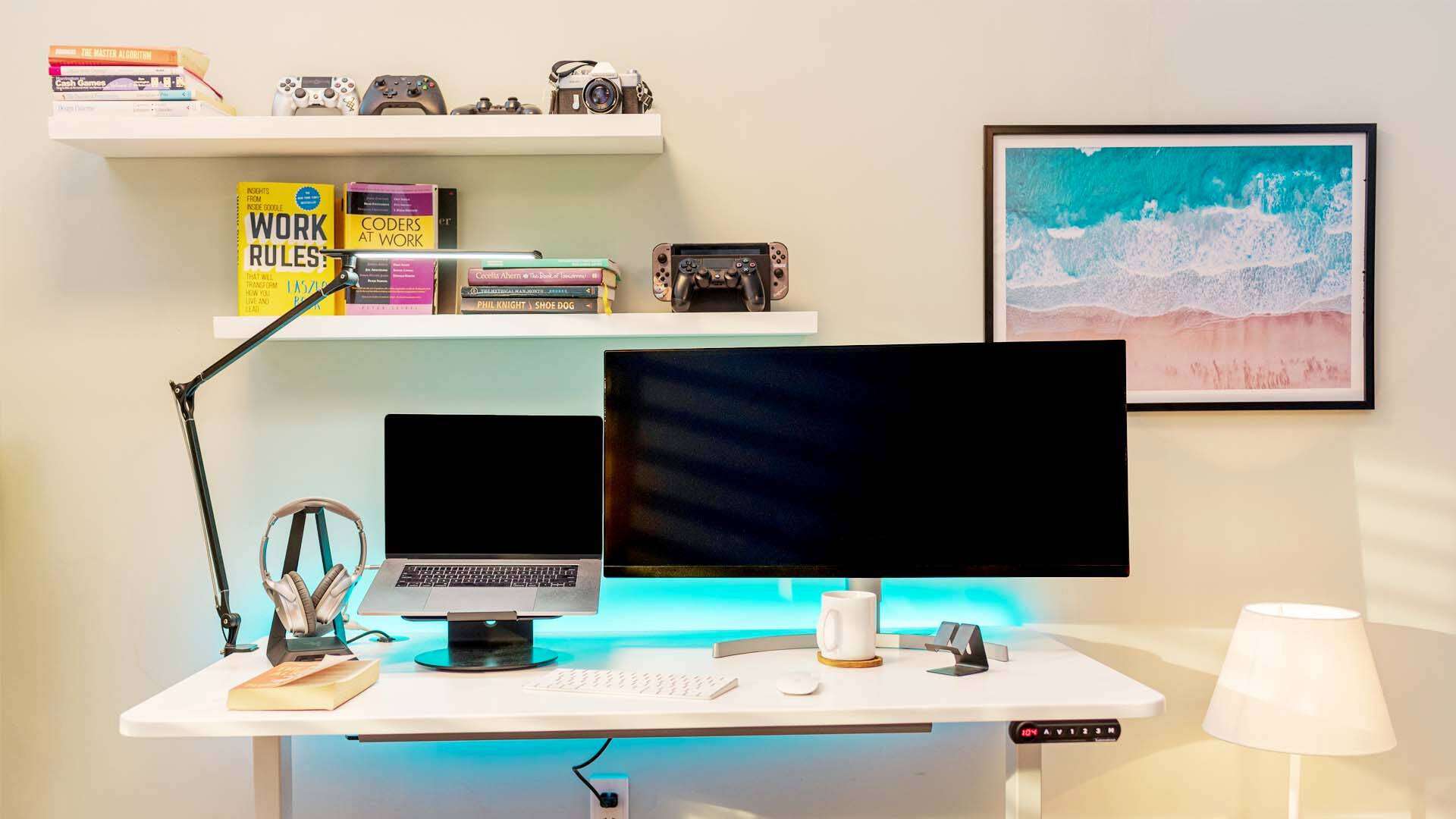Table of Contents
Having an efficient and well-organized workspace is essential for productivity and well-being. One of the most critical aspects of this is your desk layout. A thoughtfully arranged desk can significantly enhance your overall workflow, minimize distractions, and create a more conducive environment for achieving your professional goals.
Organizing Your Workspace for a More Efficient Workflow

Optimal Placement of Essential Items
The placement of essential items on your desk plays a crucial role in your workspace flow. Items that you frequently use, such as your computer, phone, and notepad, should be within arm’s reach. This minimizes the time and effort spent reaching for these items and reduces interruptions to your workflow.
Place your monitor at eye level to avoid neck strain, and keep your keyboard and mouse close enough to maintain a relaxed posture.
Declutter for a Clear Mind
A cluttered desk can lead to a cluttered mind. An organized and tidy desk helps maintain focus and reduces distractions. Use organizers, trays, and drawers to keep your desk surface clean and free from unnecessary items. Regularly declutter your workspace by removing items that you no longer need.
This practice not only enhances your physical workspace but also contributes to mental clarity and improved productivity.
Personalization and Motivation
While maintaining organization is key, personalizing your workspace can have positive psychological effects. Personal items like photos, plants, or motivational quotes can create a pleasant and inspiring environment. However, it’s essential to strike a balance—too many personal items can contribute to clutter.
Choose a few meaningful items that bring joy and motivation without overwhelming your workspace.
Efficient Use of Technology
In the modern workplace, technology is an integral part of the workflow. Efficiently integrating technology into your desk layout can streamline your tasks and improve productivity.
Use cable management solutions to prevent tangling and clutter caused by multiple cords. Wireless devices can further reduce clutter and provide more flexibility in arranging your workspace. Additionally, docking stations and multi-monitor setups can enhance your productivity by allowing you to multitask more effectively.
Incorporating Movement and Breaks
A well-designed desk layout should also accommodate movement and breaks. Prolonged sitting can lead to various health issues, so it’s crucial to incorporate opportunities for movement. Adjustable desks that allow you to switch between sitting and standing positions can promote better posture and reduce the risks associated with sedentary behavior.
Schedule regular breaks to stretch, walk around, and rest your eyes. These breaks can rejuvenate your mind and body, improving overall productivity.
Lighting and Ambience
Lighting plays a significant role in creating an optimal workspace. Natural light is ideal, as it reduces eye strain and boosts mood and energy levels. Position your desk near a window to take advantage of natural light, but ensure that glare on your computer screen is minimized.
If natural light is not an option, invest in good quality, adjustable lighting that provides adequate illumination without causing glare or shadows.
Final Note
Your desk layout is a critical component of your overall workspace flow. Prioritizing ergonomics allows you to create a workspace that enhances productivity and well-being. A well-thought-out desk layout not only improves your work performance but also contributes to a more enjoyable and sustainable work environment.
